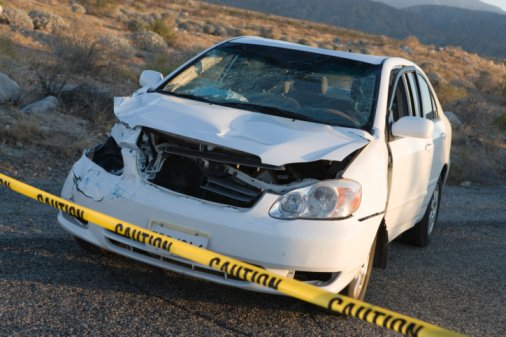
Technology and automation are creeping into every aspect of human life. Technological developments are progressing such that cars could soon completely drive themselves. Consumers already can buy vehicles that have some autonomous features, like lane departure detection, collision warning systems, “smart” cruise control, and autonomous braking.
Recently, U.S. News & World Report released a list of “9 Cars That Are Almost Self-Driving” that are already available to the public. This highlights the fact that this new technology is a major focus of automakers and could soon lead to cars that have no need for a human driver.
As vehicles increase in sophistication and autonomy, there are some very real concerns about safety on the road. Will automated cars really help keep us safer, as automakers suggest? What happens if they malfunction? Can autonomous vehicles safely share the road with human drivers?
These questions and more will continue to be critical parts of the discussion as companies incorporate more automation into our vehicles.
What Are the Levels of Autonomous Self-Driving Cars?
A fully autonomous car or driverless car is a vehicle that can guide itself without any operation by a human driver. There are several vehicles already on the market with several autonomous features. Because the range in these types of features, car makers are working on agreed-upon definitions of “autonomous.” These features can be grouped together into a uniform set of self-driving levels.
The Society of Automotive Engineers established a classification of autonomy in levels ranging from 0 to 5. In this system, Level 0 is the least independent, and Level 5 is the most autonomous. These levels describe the system, not the vehicle.
- Level 0: Cars at Level 0 are not autonomous. A human must drive the vehicle at all times. These vehicles may have advanced features like cruise control, lane departure detection, and collision warning systems. At this level, a human driver must constantly monitor the driving environment and react appropriately.
- Level 1: Cars at Level 1 come equipped with systems that perform some specific tasks such as braking and accelerating by themselves. Cars at this level need a human driver at all times.
- Level 2: Cars at Level 2 come equipped with partial automation. A car may steer, speed up or slow down by itself for a short duration. The driver may be required to take control of the car at any time. At this level, a driver must watch the driving environment.
- Level 3: Cars at Level 3 can operate autonomously, but a driver still must be present. The car can ask for the person to intervene and take over driving when it encounters circumstances it cannot handle on its own. Pivotally, at this level, the car’s system monitors the driving environment, rather than the driver.
- Level 4: These cars are fully autonomous in all conditions and need to have a driver intervene only in the event of an emergency. There are controls for a person to take over driving. At this level, the car’s system monitors the driving environment.
- Level 5: Cars at this level are designed to operate fully autonomously in all conditions and environments. While there are controls for a driver, these vehicles are meant to drive themselves. At this level, the car’s system monitors the driving environment.
Semi-autonomous and autonomous car technology is still developing. Many of the vehicles on the road today only have Level 0 and Level 1 driving systems, while some newer car models operate at Level 2 automation.
Higher-level systems are not allowed by law in most areas. Some states including Washington, Texas, Nevada, and Connecticut are allowing companies to test completely autonomous cars in traffic. Google is currently testing Level 3 vehicles in specific areas in a limited capacity. Currently, “Level 5” self-driving cars are currently outlawed on nearly every public road in America.
The Dangers of Driverless Car Technology
Automakers tout the safety benefits of autonomous vehicles, claiming that these vehicles will keep people safer by reducing collisions caused by human error. Unfortunately, when autonomous vehicles share the road with human drivers, unique problems may arise.
Drivers may find that autonomous vehicles’ actions and reactions are difficult to gauge. They may behave differently from how a human driver would in certain situations. Also, there have been instances where the autonomous car’s system fails to respond appropriately to the situation. For example, an autonomous shuttle bus being tested in Las Vegas did not back up, honk, or attempt to move when a delivery truck backed into it, errors not likely to be made by a human.
Another issue with autonomous and semi-autonomous cars is that the driver may stop paying attention to the road and the driving environment. Some may assume that these autonomous features are infallible or are more capable than they actually are, setting the stage for increased distracted driving and catastrophic accidents.
Google filmed drivers in semi-autonomous cars to see how they behave in the vehicles. Often, the drivers stopped watching the road and instead paid attention to their phones, applied makeup, and in some cases, tried to sleep. Drivers in semi-autonomous cars routinely fail to understand that they still need to pay attention to their driving environment and that they must be ready to take control of the vehicle at any moment. This is a concern for many moving forward: many drivers do not quite understand the difference between semi-autonomous and fully autonomous.
The Impact of Driverless Car Technology
Right now, driverless car technology is so new that it remains to be seen how it will affect us in the long-term. While we hope that these features will ultimately make the roads safer for everyone, it is clear that there will be accidents and questions regarding the liability of the driver or the automaker when crashes occur.
In the event of an accident with an autonomous vehicle, is the vehicle’s owner or the driver at fault? Is the automaker liable? Many states, including Alabama, have enacted legislation to study the safety of autonomous vehicles. It is clear that autonomous vehicles will continue to be a significant focus of the automobile industry, so it is critical for lawmakers to address the impact these vehicles will have on the roads and highways in their states.
Contact Us for Legal Help After a Car Accident
The Huntsville car accident attorneys of Morris, King & Hodge, P.C., have been standing up for injured people in Alabama since 1966. Not only do we have a comprehensive understanding of our state’s injury laws, we also keep a constant eye on the developing technologies that could affect our friends and neighbors in Huntsville and across the state now and in the future. We will continue to evaluate the impact of semi-autonomous and autonomous cars as they become more prevalent on our roads.
If you or someone you love has been hurt in an accident that was not your fault, don’t hesitate to contact us by phone or online now to discuss your rights and your legal options. The consultation is free, and we do not get paid unless we collect a settlement or award for you.










